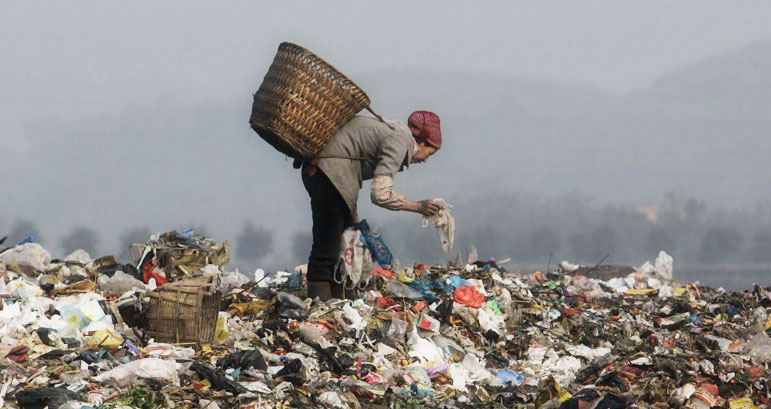According to data from the United Nations, Chinese and Hong Kong manufacturers imported 7.3 million tonnes of plastic for recycling in 2016. The material came mainly from rich countries such as Japan, USA and European Union nations, and amounts to 70% of all the plastic discarded in the world that year.
Brazil also contributed a small part of this total – in 2017, the country sold 25.3 thousand tons of recycling paper to China. It also shipped to the Asian country 14,600 tons of waste and scrap metal for recycling, mainly copper (12,300 tons), aluminum and steel. The data comes from the Ministry of Development, Industry and Commerce (MDIC), raised at the request of the BBC Brazil.
This flow, however, should change as of this year, as China decided to stop receiving much of that material. According to Beijing, the aim is to protect the country’s environment from the “dirty” and even dangerous “garbage” that gets there today. Authorities also say that the national production of recyclable waste is enough to meet the demands of local industry.
Prohibition and panic
Last July, the Chinese government announced a ban (from 2018) on imports of certain types of materials for recycling – which worried several countries in the world. The measure included new rules on the types of recyclable materials that could be imported into the country, which would enter into force on 1 October, and notify the World Trade Organization (WTO) that it has banned 24 categories of materials and solid waste.
The government campaign looks at what the Chinese call yang laji, the “foreign garbage”: recyclable plastics, textile waste and certain types of paper. The Asian country will continue to import cardboard, for example. But it should be “much cleaner” than the current one, and free of waste like dirt, dust and boulders.
Faced with the global panic caused by the announcement, the WTO and exporting countries called on China to postpone the ban and open the possibility of a five-year “transitional period.” According to the specialized website Chinadialogue.com, negotiations continue – Beijing agreed, for example, to postpone the start of the new rules until March 1.
“The (recyclable) industry was not prepared for the Chinese government’s sudden announcement in July of a total ban on imports of mixed paper (with different types of fibers and colors) and a reduction of the maximum allowed contaminated materials to 0, 3% of each batch”, reports Chinadialogue.com.
Dependency
The fears provoked by Beijing’s announcement reflect China’s global dependence on waste management. According to UN data, trade in these products with China and Hong Kong handled $ 21.6 billion last year. European Union and the United States are the main exporters. Only the latter exported 13.2 million tons of recycled paper and 1.4 million tons of plastic last year to China. Much of the paper and paperboard imported by China turns into boxes for packaging products – both those sold in the country and those exported. Companies in exporting countries, as expected, now face the challenge of finding what to do with the material once the ban comes into force. Both the recycling industry and the governments of rich countries are under tremendous pressure, as the collection of this type of waste may no longer be economically viable.
In December, British Environment Minister Michael Gove admitted to a session in Parliament that he did not know what the size of the impact of the Chinese ban on UK companies would be. In 2016, the country exported 400,000 tons of plastic waste to China.
Alternatives
What will happen then with the mountain of recyclable garbage that China will no longer receive?
According to the International Recycling Office (BIR), an organization based in Brussels and representing the industry at the global level, new markets for these products are being sought. Countries such as Thailand, Vietnam, Cambodia, Malaysia, India and Pakistan are possible destinations for recyclable waste.
“These countries are already positioned in the market, but they certainly do not have the same capacity as China”, BIR Director-General Arnaud Brunet told Recycling International.
He adds that the laws and regulations of these countries are not as developed as the Chinese. Brunet says 2018 will be “decisive” for the recycling industry.
“What I feel is that there will be no setbacks, that our industry has to adapt, follow the rules and find alternative options for the long term”, he says.
These alternatives could include burning materials for power generation , or disposal in landfills. This last option is less appropriate as these materials can cause fires. Experts say Beijing’s measures could be a “turning point” in our relationship with these materials and in the way we use them. According to them, the challenges now facing countries dependent on China to solve their environmental problems provide an opportunity to think about new recycling programs and new ways to use the tons of paper and plastic products that are discarded today
Source: http://www.bbc.com/portuguese/internacional-42615990


Comments